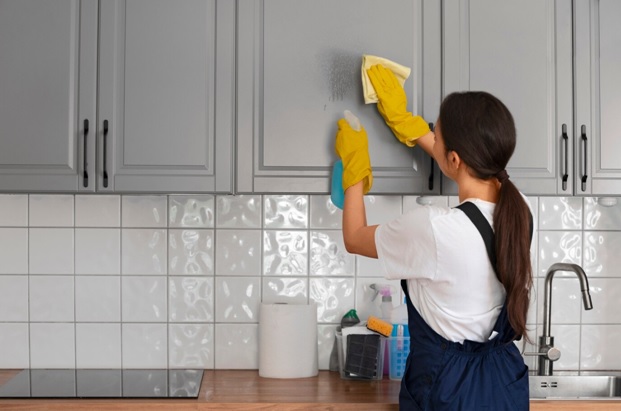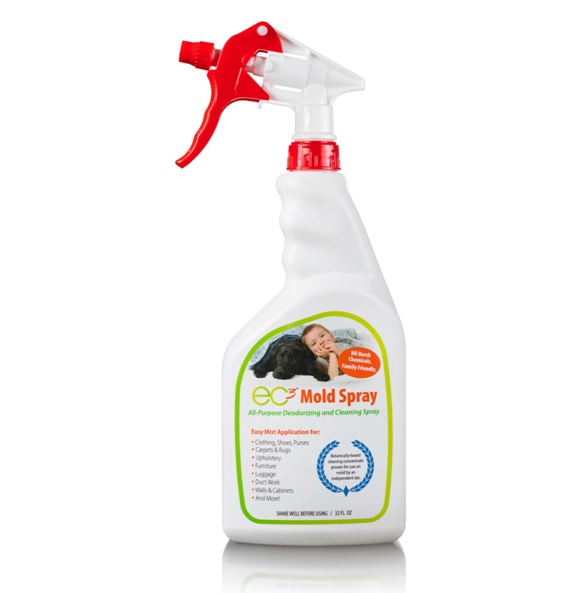Cleaning Champions: Essential Habits to Maintain a Mold-Free Home
Aug 29th 2024
Do you ever notice a musty odor lingering in your home, especially after a rainy season or in damp areas like the bathroom? This could be a sign of mold growth, a sneaky enemy that can thrive in moist environments and pose a threat to your health and the structural integrity of your home.
What’s more, if left unchecked, mold spores can irritate airways, trigger allergies, and even lead to more serious respiratory and health problems.
The good news is that preventing mold growth doesn't require a hazmat suit and a team of specialists. And, while mold removal is crucial, prevention is always better than a cure. By incorporating some simple cleaning habits into your routine, you can significantly reduce the risk of mold growth and create a healthier living space for yourself and your family.
How Does Mold Form: Conquering Moisture
Mold thrives in damp environments. Understanding the sources of moisture in your home is the first step towards preventing its growth. Common culprits include:
- Leaks: Hidden leaks behind walls, under sinks, or around windows can create the perfect breeding ground for mold. Regularly check for any signs of leaks, including water stains, peeling wallpaper, or soft spots on floors or ceilings.
- Poor Ventilation: Homes with inadequate ventilation trap moisture in the air, which condenses on surfaces and promotes mold growth. Ensure proper ventilation in bathrooms and kitchens by running exhaust fans during and after showers or cooking. Consider opening windows whenever possible to allow fresh air to circulate.
- High Humidity: Humidity levels above 50% can create ideal conditions for mold. Invest in a hygrometer to monitor humidity levels in your home. Dehumidifiers can be helpful in areas prone to high humidity, such as basements or laundry rooms.
Spotting Mold Growth Early
While prevention is key, it's important to be able to identify mold growth in its early stages. Here are some warning signs to watch out for:
- Visible Mold: Look for visible mold growth on walls, ceilings, floors, or furniture. Mold can appear in various colors, including black, green, brown, or white.
- Musty Odors: A persistent musty odor in your home could indicate mold growth, especially in areas with poor ventilation.
- Allergy Symptoms: If you or your family members experience allergy-like symptoms such as sneezing, coughing, or itchy eyes after spending time indoors, it could be an early sign of mold exposure.

Creating a Mold-Free Zone: Essential Cleaning Habits
Here are some key cleaning habits to adopt in your fight against mold:
1. Target High-Moisture Areas:
- Bathrooms: After showering or bathing, leave the bathroom door open or use an exhaust fan to remove excess moisture. Regularly wipe down shower doors, walls, and countertops with a disinfectant cleaner.
- Kitchens: Clean up spills and crumbs promptly to prevent moisture build-up. Wipe down surfaces around the sink and stove top after use. Empty the drip tray on your refrigerator regularly.
2. Embrace Ventilation:
- Increase Air Circulation: Open windows and doors whenever possible to allow fresh air to circulate and remove moisture from your home. Overhead fans or space fans are also great air circulators and should be used to keep air moving throughout your home.
- Bring in the Light: Mold thrives in darkness. Open curtains and blinds to allow natural light to enter your home. Sunlight has natural disinfecting properties and can also help dry out damp areas.
- Exhaust Fans are Your Friends: Ensure bathroom and kitchen exhaust fans are functioning properly and run them during and after showers, cooking, and cleaning activities.
- Consider Dehumidifiers: In areas prone to high humidity, consider using a dehumidifier to control moisture levels, especially during the summer months.
3. Tackle Leaks and Condensation:
- Don't Delay Repairs: Address leaky faucets, pipes, or roof issues promptly to prevent moisture build-up.
- Beware of Condensation: Identify areas prone to condensation, like windows or pipes, and wipe them down regularly to prevent mold growth.
4. Cleaning Routines Make a Difference:
- Regular Cleaning Schedule: Develop a consistent cleaning schedule that includes wiping down frequently touched surfaces, vacuuming carpets and rugs, and mopping floors. Pay particular attention to areas behind furniture and appliances where moisture can accumulate unnoticed.
- The Power of Prevention: Consider incorporating a natural mold spray like EC3 Mold Solution Spray into your cleaning routine. This eco-friendly spray can be used on various surfaces to prevent mold growth and eliminate existing spores.
5. Lighten Up on the Clutter:
- Minimize Clutter: Mold thrives in dark, damp environments. Minimize clutter in your home to improve air circulation and allow for easier cleaning, especially in areas prone to moisture.
- Storage Solutions: Invest in storage solutions like baskets or shelves to keep belongings off the floor and away from walls, preventing moisture build-up. Additionally, avoid using cardboard boxes for storage as they trap moisture and can become great organic material for mold to grow on.
- Store Wisely: Avoid storing damp clothes or towels in closets or drawers. Ensure proper air circulation around furniture and appliances to prevent moisture buildup.

Deep Cleaning Strategies for a Mold-Free Home
In addition to your weekly cleaning routine, incorporating deep cleaning strategies a few times a year can further reduce the risk of mold growth:
- Carpet Cleaning: Carpets trap dust, dirt, and allergens, which can also harbor mold spores. Professional carpet cleaning every 12-18 months is recommended. For regular maintenance, vacuum carpets thoroughly at least once a week. Using a HEPA filtered vacuum is advised as the closed system prevents dust and mold spores from being recirculated and spit back out into the environment.
- Grout and Tile Cleaning: Grout lines in bathrooms and kitchens can be breeding grounds for mold. Scrub grout lines regularly with a mold-killing solution or a natural mold spray like EC3 Mold Solution Spray.
- Air Ducts and Vents: Dust and debris buildup in air ducts can contribute to mold growth and spread spores throughout your home. Consider having your air ducts professionally cleaned every 2-3 years. Change your HVAC filters regularly as well–every 3 months–to help mitigate dust and allergens.
When Prevention Isn't Enough: Addressing Existing Mold Growth
If you discover mold growth in your home, it's crucial to take action to remove it safely and effectively. For small areas of mold, you can try using a natural mold spray like EC3 Mold Solution Spray.
However, for larger areas or persistent mold problems, it's best to consult a professional mold remediation service.
Building a Mold-Free Future for Your Home with the EC3 Mold Spray
By incorporating these essential cleaning habits into your routine, you can significantly reduce the risk of mold growth in your home. Remember, prevention is always easier and less expensive than dealing with a full-blown mold infestation. With a little effort and consistency, you can create a mold-free home and give your family the best possible environment for healthy growth and development.
If you’re looking for effective and efficient mold solutions for your home, browse through our online store, here on our website and equip your home with the right preventive solutions.



